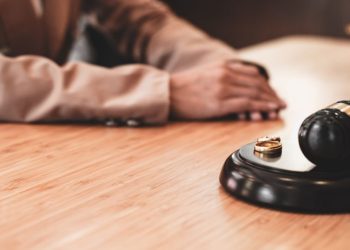Midlife & Beyond Dating: Illa Lynn
Someone recently asked me why she wants an attentive, loving relationship. But when she gets it, she feels bored and wants to run away?
Hot and Cold Behavior:
Due to her hot and cold behavior, she wondered if she was borderline narcissistic or not quite ready for a relationship.
Unlike narcissistic personality disorder (NPD), which requires professional assessment, the hot & cold behavior among singles can be explained through attachment style theory.
Due to internal insecurities and/or fear of intimacy, people who desperately seek love often self-sabotage when they get close to someone. People who fit this profile are considered disorganized-attached or fearful avoidants. When it comes to this attachment style, anxious and avoidant attachment styles fluctuate, and people can appear hot & cold in their relationship dynamic.
“Their behavior is not intentional, but it is the only way they know to cope.”
Top 3 Questions Asked About This Attachment Style:
1. What Should I Do About This Rollercoaster Situation?
“It feels great when they are close, but just when I think we are getting somewhere, they pull back, leaving me confused. I am not sure how to make them stay or feel comfortable.”
Answer:
People who are disorganized attached want to be loved just as much as anyone, but getting too close and too intimate can cause them to panic. As discussed in previous articles, they are fearful of abandonment or enmeshment, which is rooted in insecurities, so it gives them a sense of control to pull back first and self-sabotage. Their behavior is not intentional, but it is the only way they know to cope. Understanding this attachment style is very helpful.
Open Communication:
Creating safety begins with open communication. Make sure you both feel comfortable talking about your needs inside your relationship, but keep it within reason. They can be frightened by too much, too soon.
- Establish a schedule for check-ins to foster trust.
- In the event that one of you pulls back, determine what steps you need to take.
- Respect each other’s space and needs inside and outside the relationship.
There are some individuals who are open to working on their relationship and gradually get a more secure attachment style, while there are others who may have a hard time, leading to problems or a breakup. Learn to navigate this terrain with discernment.
2. What Causes People To Develop Disorganized Attachment Styles?
“I would love to help my partner feel more comfortable and safe with me, but sometimes I worry they will run away if I ask them to share openly. That’s the opposite of what I want. The goal is to understand them so I can provide the support they need.”
“Children who become parents due to family enmeshment may fear intimacy and confinement as they grow up.”
Answer:
Getting to know each other is a fundamental relationship goal everyone should strive for, however, that can be difficult if they are unable or unwilling to share this intimate part of themselves. As with most attachment styles, this one develops during childhood as a result of inconsistent care or traumatic experiences, resulting in both a desire for closeness and the fear of intimacy later in life.
According to studies on attachment theory and this specific behavior, if for example a mother or father were loving and nurturing one day and unpredictable and cold the next, the child would develop distorted perceptions about love. Children who become parents due to family enmeshment may fear intimacy and confinement as they grow up.
We all have childhood experiences that shaped our views about love and relationships, so learning about each other’s upbringing is a great way to make your partner feel seen and safe. It also fosters a closer connection.
3. What Can I Do To Break Down Their Walls?
“There’s a protective wall around my partner’s heart, and I feel like I’ll never be able to get inside it? When should I stay, and when should I leave?”
Answer:
Building trust takes time. Be patient and consistent. Your actions should show you care about them. Each act of kindness chips away at those walls. Walls crumble as trust grows.
Use your discernment if you’ve given it your all, sought out professional help, and still don’t see improvement, and perhaps it’s time to leave that relationship and find someone who can reciprocate the love you can give. Someone with an attachment style better suited for you.
“The best course of action in any relationship is to move on if effort and energy are not reciprocated.”
There’s a good chance people won’t always meet you halfway, but that doesn’t mean you have to take it. The best course of action in any relationship is to move on if effort and energy are not reciprocated.
3 Long-Term Tips For A Stronger Connection:
1. Maintain A Steady Emotional State:
- Maintain a healthy emotional balance by working together. Create an emotional safe zone by having open chats and providing reassurance during bumpy times.
2. Create A Trusted Foundation:
- Ensure your partner has the support he or she needs. During tough times, offer understanding, creating a safe haven for them.
3. Consider A Little Extra Help:
- Professional advice, such as couples counseling or coaching, can be like having a relationship GPS. You can navigate the twists and turns and reach a more solid connection this way. Despite what others think, professional support is not a weakness or a waste.
Understanding Attachment Styles:
Recognizing these behaviors and supporting your partner can make your relationship more intimate and harmonious. Though attachment theory isn’t new, people are just now discovering how valuable it can be. By understanding your attachment style, you can foster healthy relationships, heal your insecure attachment style, or help someone heal. It’s easier to understand yourself and others when you know your attachment style.
Having self-awareness and self-reflection is essential, as we won’t be able to maintain long-term relationships if we don’t know who we are and how we show up in relationships.
Did you enjoy this article? Become a Kuel Life Member today to support our Community. Sign-up for our Sunday newsletter and get your content delivered straight to your inbox.

About the Author:
Illa Lynn is a former corporate health care leader turned Life Coach who specializes in Relationship Coaching for women. In addition to her ten years of academic and professional training, she specializes in dating after 40. Specifically dating after divorce, or toxic love. Using her psychology background and intuitive nature, Illa helps women open up to love again. In three steps, Illa guides women to create lasting, authentic relationships founded on transparency, respect, and trust. Follow Illa on LinkedIN for more tips and tricks on dating.























